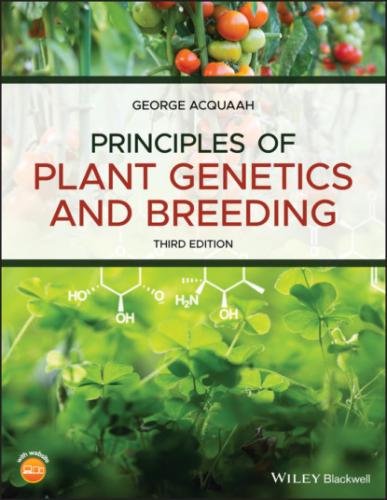12 Section 7: Technologies for linkinggenes to traits 20 Molecular markers 20.1 The concept of genetic markers 20.2 Use of genetic markers in plant breeding 20.3 Concept of polymorphism and the origin of molecular markers 20.4 Brief history of molecular markers 20.5 Classification of molecular markers 20.6 Enzyme‐based markers 20.7 Hybridization‐based markers 20.8 PCR‐based markers 20.9 PCR‐based markers from RFLPs 20.10 DNA sequence‐based markers 20.11 Comparison of selected molecular markers 20.12 Desirable properties of a molecular marker system 20.13 Readying markers for marker assisted selection Key references and suggested reading Outcomes assessment 21 Mapping of genes 21.1 Why map genes? 21.2 Types of gene maps 21.3 Principles of linkage mapping 21.4 Mapping populations 21.5 Identification of polymorphic markers 21.6 Linkage analysis of markers 21.7 Rendering linkage maps 21.8 Mapping quantitative trait loci (QTL) 21.9 High‐resolution QTL mapping 21.10 Bulk segregant analysis (BSA) 21.11 The value of multiple parent populations in mapping 21.12 Creating MAGIC and NAM populations for QTL mapping 21.13 Comparative genome mapping 21.14 Synteny Key references and suggested reading Outcomes assessment 22 DNA sequencingand OMICs technologies 22.1 What is DNA sequencing? 22.2 Types of sequencing technologies 22.3 Next‐generation sequencing (NGS) workflow 22.4 Genotyping by sequencing 22.5 What are the “OMICs” technologies in plant breeding? 22.6 Genomics 22.7 Transcriptomics 22.8 Proteomics 22.9 Metabolomics 22.10 Phenomics Key references and suggested reading Outcomes assessment
| Автор: | George Acquaah |
| Издательство: | John Wiley & Sons Limited |
| Серия: | |
| Жанр произведения: | Биология |
| Год издания: | 0 |
| isbn: | 9781119626695 |
